A valid solution for a multi-purpose bathroom is to fit a bathtub and shower into the same room. This post examines the minimum measurements involved and the alternatives available for consideration.
Planning a bathroom with bathtub and shower involves paying careful attention to the measurements of each piece of furniture or fixture in order to establish priorities and avoid design errors.
A preference for one or another solution has often been influenced by the fashion of the time. For many years bathrooms had bathtubs, mostly rectangular and with standard measurements (approximately 70x170cm), tiled with the same tiles as the bathroom. This gave way to a boom in requests to eliminate the bathtub and replace it with the more practical shower enclosure, influenced also by a change in lifestyles which involved dedicating less time to relaxing at home.
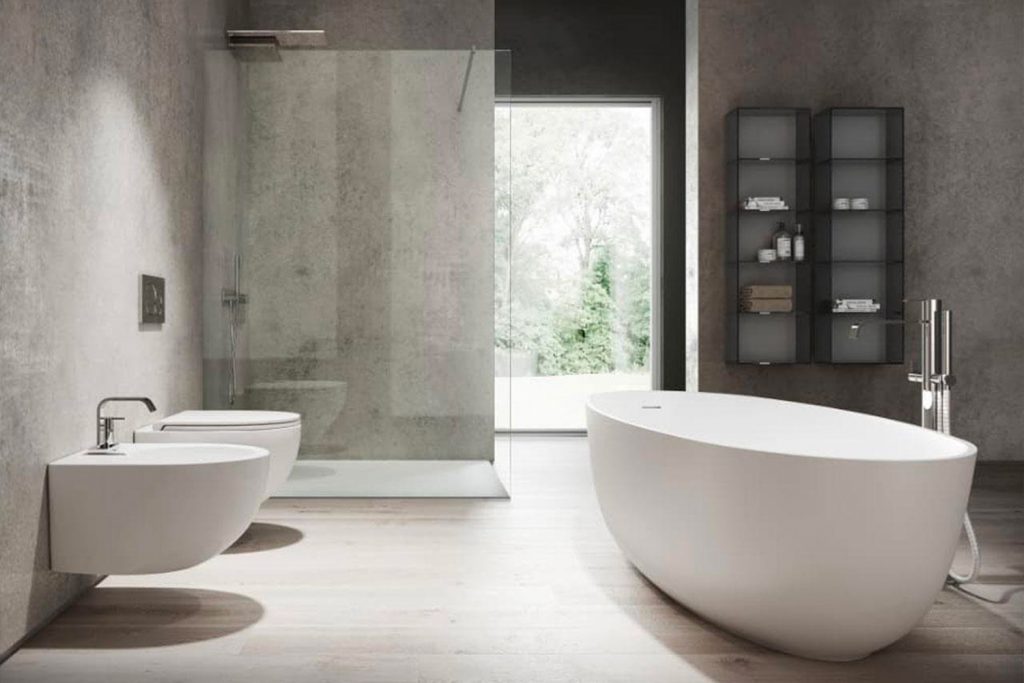
Nowadays the bathroom has a primary role in the house and has become a private spa in which to relax and pamper ourselves. It is no longer just a service room or a mere bathroom, but can be planned as a multi-purpose place which can incorporate, for example, a small private spa or a laundry area (as we saw here).
In this context, today the height of luxury is to fit both a bathtub and shower into the bathroom so that we can choose which we prefer according to our timetable and whim. This is a highly flexible, practical solution, especially if there is just one bathroom in the house.
How much space do a bathtub and shower need? Can we fit a shower enclosure and bathtub into a small bathroom? What measurements should be considered? Let’s discuss the question now.
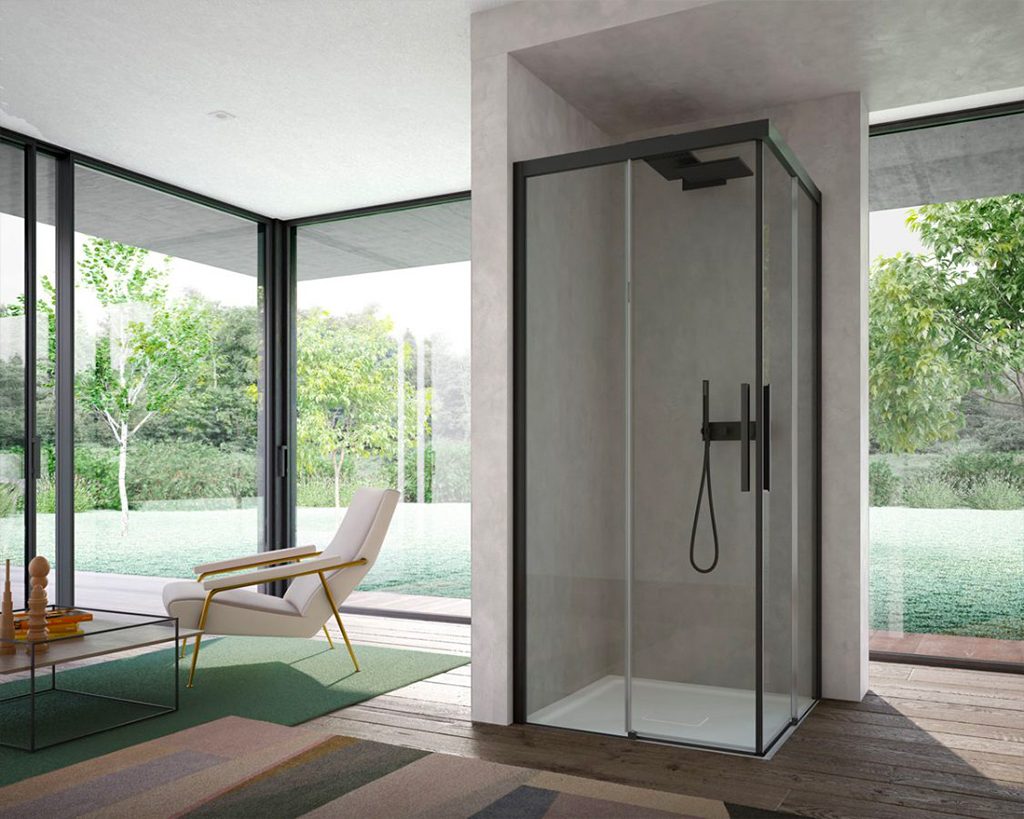
How much space does a shower enclosure occupy?
In general, to accommodate a shower comfortably a tray of 70x90cm or 80x80cm is big enough, but it’s not quite as simple as that. These are minimum sizes and must be calculated together with other factors:
- How often is the shower used and how important is it to feel comfortable inside? We should consider this if we are thinking about a mini shower (a space-saving shower) because it’s not often used, or one as comfortable and as big as possible because it’s the only shower in the house.
- What build are the people who will use it? As you can imagine, this is a factor not to be neglected.
- Do we want to install massaging water jets for a spa shower? We need to reckon a dimension that will make such a solution comfortable and allow for a small seat on which to relax.
Trends in recent years go towards a generously proportioned maxi shower, minimum depth 80 or 90cm and widths up to 180 or 200cm. Modern showers, in other words, occupy more space than a bathtub and can be made to measure (both the shower tray and the glass enclosure).
How to choose a shower?
Plan one with our configurator
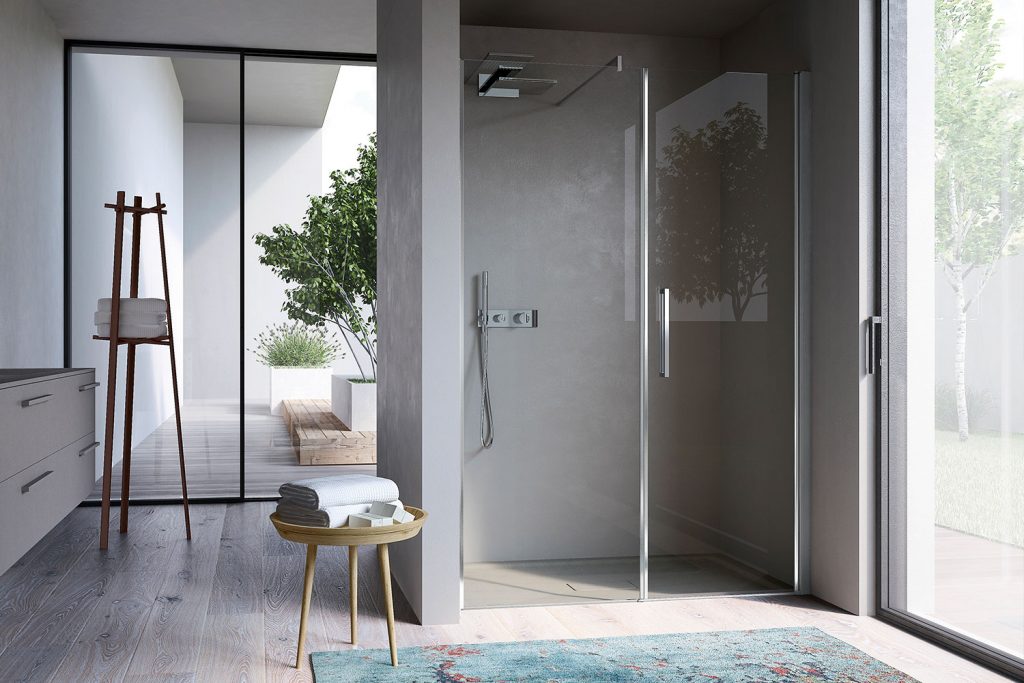
How much space does a bathtub occupy?
The standard size for a bathtub is 70x170cm: this is a common size, available for a host of models. However, it is not the only minimum dimension: there are smaller bathtubs that can adapt to small or tiny bathrooms.
According to the space available and the layout of the bathroom, we can install a bathtub:
- in a corner, choosing a model with compatible depth and length (there are also types with bespoke surrounds made to adapt to different planning needs);
- free-standing: a free-standing bathtub can be a solution also for small bathrooms if we choose a small-sized model.
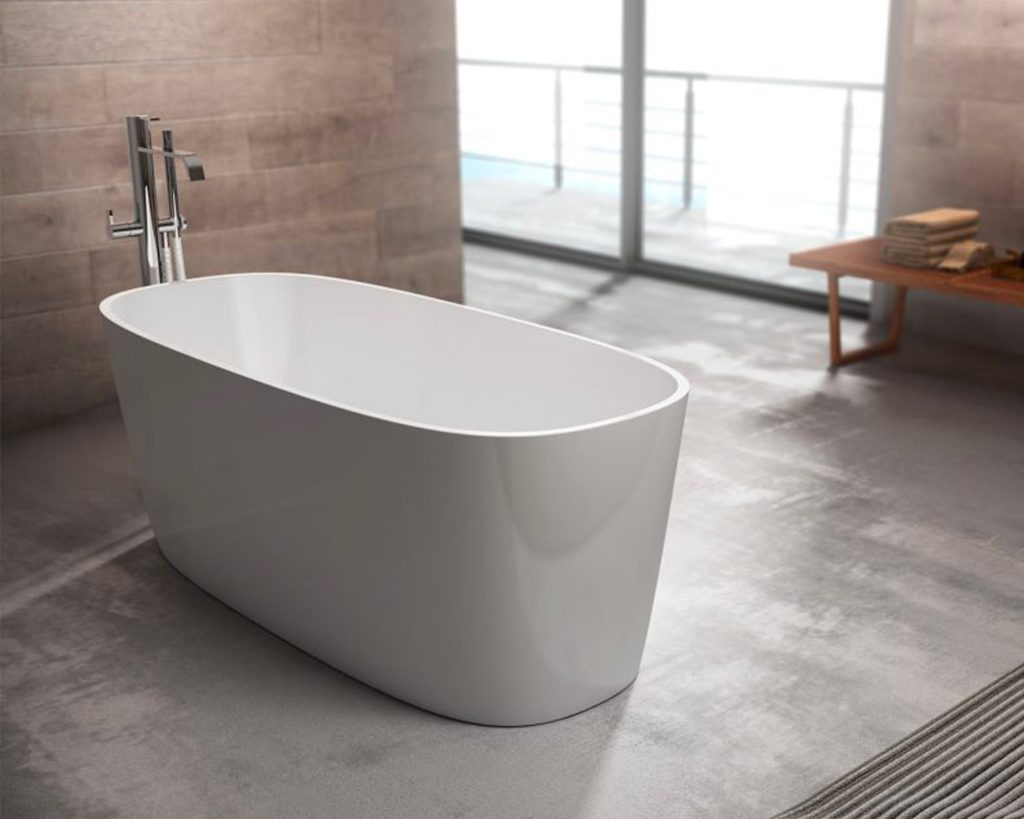
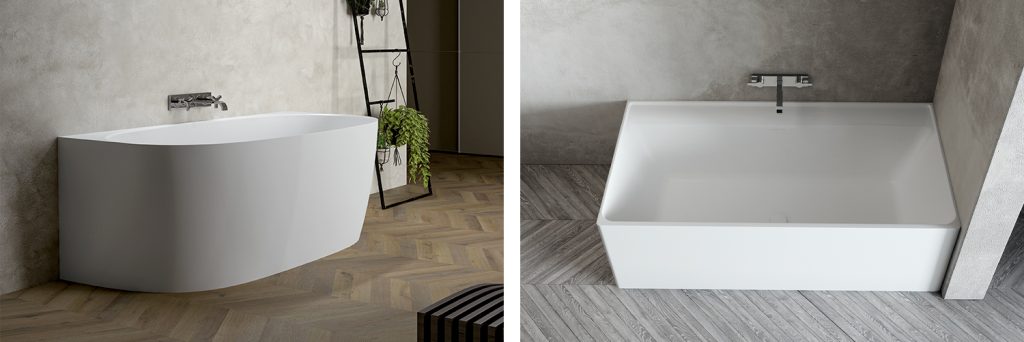
Take a look at our discussion of choosing a bathtub in a previous post.
How to fit both into the bathroom?
Once we know the approximate measurements of bathtub and shower enclosure, we must consider our priorities in order to decide which one we consider more important:
- If there’s just one bathroom in the house, it’s better to establish which of the two solutions is more important, and plan the bathroom accordingly;
- If we have a second bathroom with a shower, we can dedicate more space to the bathtub and reduce the size of the shower tray;
- It’s not so common to have two bathtubs in the house, but if you have you can choose a small bathtub and a more generously proportioned shower enclosure.
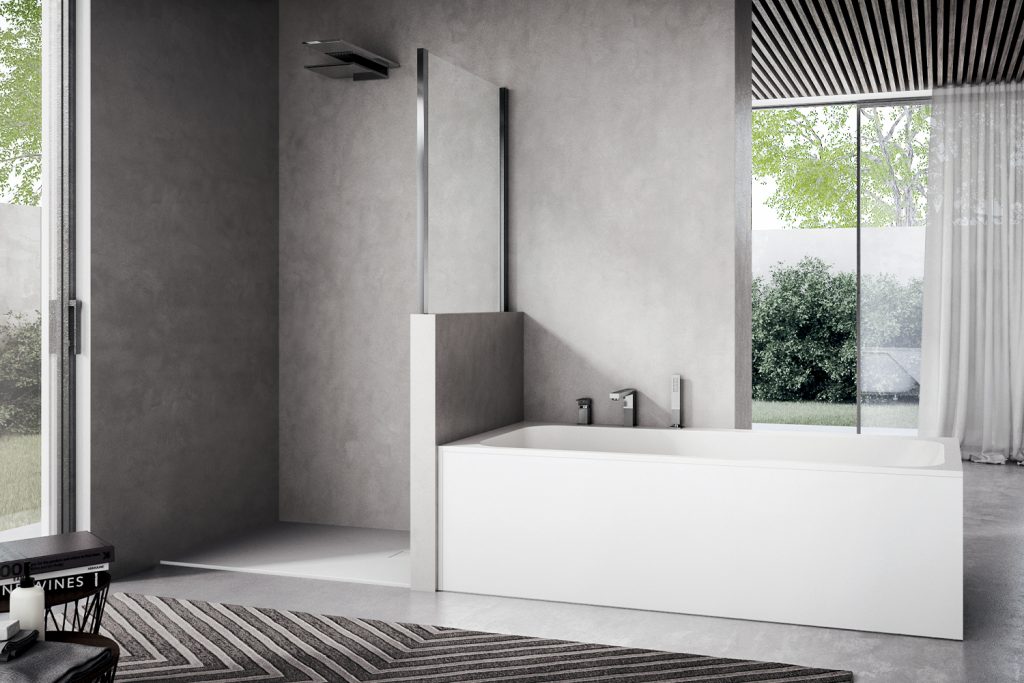
Once the sizes have been established, you can compose your bathtub and shower solution:
- they can be fitted attached to each other, separated by a low wall or a masonry or plasterboard partition;
- to optimise bathroom space, they can occupy two different areas;
- or the shower can be fitted into a niche or corner and the bathtub be free-standing, without the need for a wall.
A bath screen turns a bathtub into a shower
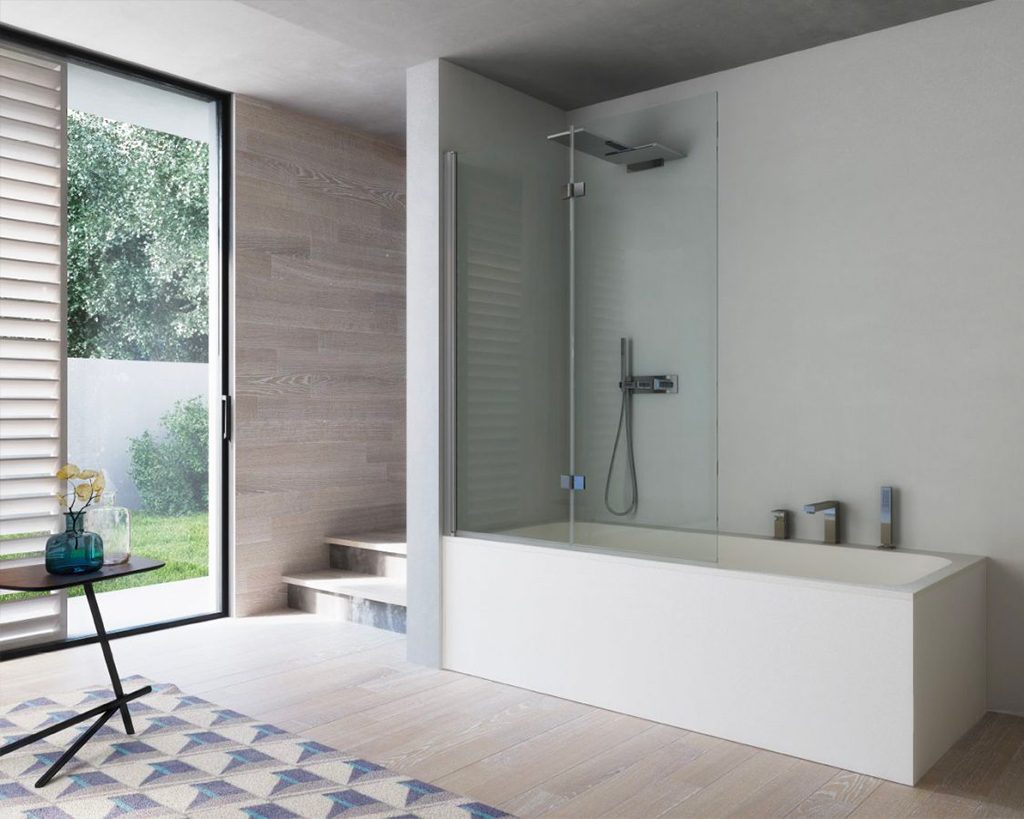
A last solution, often forgotten, is the possibility to use the bathtub as a shower. All you need is a glass bath screen on the rim to transform part of the tub into a semi-open shower enclosure.
Versatile and even more economical than the alternatives described above, it takes up less space because the bathtub serves both purposes.
See all our bath screen solutions
Bathroom with bathtub and shower: how much space is left for cabinets?
A final useful tip if we are planning a bathroom with shower and bathtub.
If we want to fit both, we may have to reconsider the space for cabinets: in this case the best solution is to choose a flexible, modular collection that will make the most of each centimetre, like FORM, which we described in detail in this post and which provides several ideal solutions for the situations we are analysing:
- because it’s modular and flexible it can be used to create a cabinet by employing different depths and lengths, with open and closed units, floor-standing or suspended to adapt to the space available and also take advantage of heights (as explained here).
- it provides a wide range of sizes, including mini solutions: the smallest vanity unit measures just 45x28cm.
- besides rectangular versions, there are also rounded base units whose softer outlines take up less space.
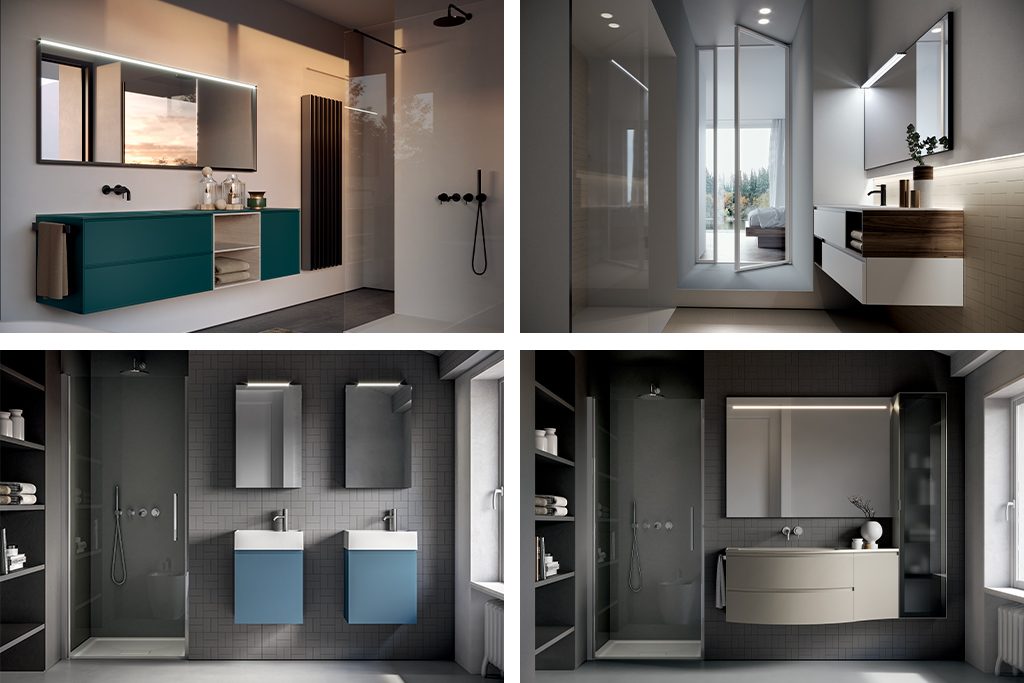


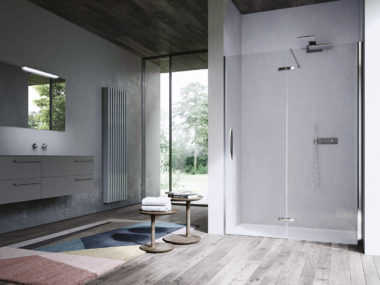






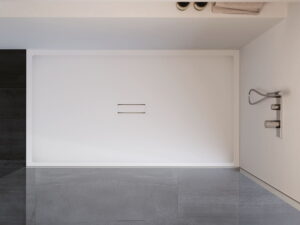
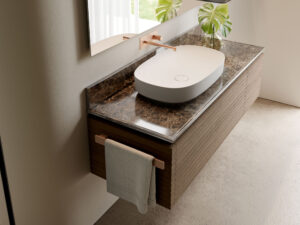

 Strictly necessary cookies
Strictly necessary cookies
 Functionality cookies
Functionality cookies
 Tracking cookies
Tracking cookies Targeting and advertising cookies
Targeting and advertising cookies